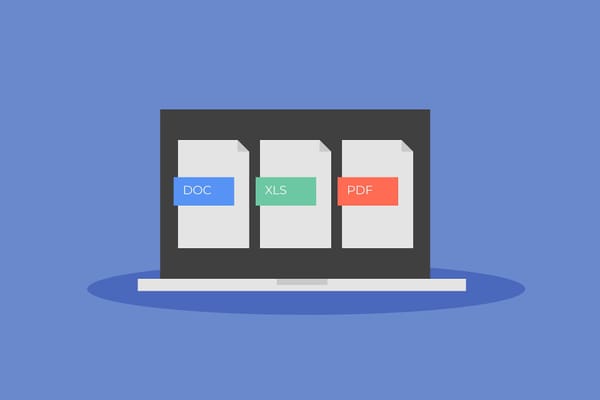How to Start a Small Business with Cybersecurity in Mind: A Simple Step-by-Step Plan (with Printable Checklist)

Starting a small business is exciting—you're focused on your offer, communication, customers, and building your brand. Whether you're registering your business, setting up your website, or refining your products or services, there's one thing you can't afford to overlook: cybersecurity.
Everything you do to build your business—from creating an online presence to sending your first invoice—needs protection. It's much easier to secure your business from day zero than to discover vulnerabilities as you go or even worse, after an attack. This guide will walk you through securing your devices, accounts, and business step by step. At the end, you'll find a checklist to keep everything organized.
Step 1: Secure Your Devices
Why: Your devices—laptops, smartphones, and tablets—are the backbone of your business. If they aren't secure, your entire business is at risk.
How:
- Set Strong Passwords or Biometric Locks: Weak passwords make it easy for hackers to break in. Use a password manager to create strong, unique passwords for each device, and consider using biometric locks like fingerprint or face ID for extra protection.
- Install Security Software: Choose a comprehensive security suite that covers viruses, malware, ransomware, phishing, and digital identity protection.
- Enable Encryption: Encryption ensures that even if your device is lost or stolen, your data remains secure.
- Set Up Remote Wipe: This feature allows you to erase your device's data remotely if it's ever lost or stolen.
Related: Five Reasons to Choose Bitdefender as Your Security Provider
Step 2: Protect Your Online Accounts
Why: From email and banking to social media, your online accounts hold vital business data. If a hacker gains access, it can severely damage your business.
How:
- Make a List of All Business Apps: Identify every app you use for work, including email, video calls, project management, invoicing, etc.
- Use Strong, Unique Passwords & Enable Two-Factor Authentication (2FA): Make sure each account has a strong, unique password and enable 2FA for an added layer of security.
- Review Privacy Settings: Go through the privacy settings of each app and set them to the highest level of security.
Step 3: Secure Your Network
Why: An insecure Wi-Fi or network can expose your business to hackers who could access sensitive information.
How:
- Use a VPN: A VPN encrypts your internet connection, making it harder for hackers to intercept your data when you're working remotely or on public networks.
- Secure Your Router: Change the default router login and enable WPA3 encryption. Turn off remote management features unless absolutely necessary.
- Set Up a Guest Network: For visitors or employees using your Wi-Fi, use a separate guest network to protect your main business network.
Step 4: Get an SSL Certificate for Your Website
Why: An SSL certificate ensures the data transferred between your website and visitors is encrypted, protecting both you and your customers from cyberattacks. Plus, it boosts your website's search rankings and gives visitors confidence in your site's security.
How:
- Choose a Reliable Certificate Authority (CA): Purchase your SSL certificate from a trusted CA after comparing prices and support services.
- Apply for the Certificate & Install It: Follow your web host's instructions to generate a Certificate Signing Request (CSR) and submit it to the CA. Once approved, install the SSL certificate on your website.
Related: What Is an SSL Certificate And 6 Reasons Why Your Small Business Website Needs One
Step 5: Keep Everything Up-to-Date
Why: Outdated software is a major security risk. Cybercriminals exploit vulnerabilities in old versions of apps and systems.
How:
- Enable Automatic Updates: Make sure operating systems, apps, browsers, and antivirus software are set to update automatically. Don't forget your website—platforms like WordPress need regular updates, too.
- Uninstall Unused Apps: Remove apps you no longer use to avoid potential vulnerabilities.
Step 6: Backup Your Data Regularly
Why: Backups are your safety net. In case of data loss from an attack or hardware failure, you'll need a way to restore your business data. A ransomware attack can encrypt your files, making them inaccessible unless you pay a ransom. Without backups, you might lose essential business data permanently.
How:
- Set Up Automatic Backups: Use both local storage (like an external hard drive) and cloud storage for automatic backups.
- Use Versioning: Cloud services often have versioning features that let you recover earlier, uninfected versions of files if you're hit by ransomware.
Step 7: Always Use a VPN on Public Wi-Fi
Why: Remember to always use your VPN when working remotely or even when just opening your laptop or phone to answer an email or check social media. Public Wi-Fi networks at cafes, airports, and hotels are often insecure, and hackers can easily intercept your data, putting your business at risk.
How:
- Use a Virtual Private Network (VPN) when working in public places. A VPN encrypts your internet connection, making it harder for hackers to steal your information. Set up a VPN on all devices used for business, especially when traveling or working remotely.
Step 8: Know the Threats Targeting Small Businesses
Why: Scammers frequently target small businesses with phishing, fake invoices, and fraudulent transactions. Knowing their tactics will help you to spot red flags right away. Phishing attempts to trick you into sharing sensitive information, like login credentials or payment details. In Business Email Compromise (BEC) attacks, hackers use compromised email accounts to impersonate trusted contacts and carry out fraudulent transactions, such as sending fake invoices or changing bank account details.
How:
- Read these blog posts in which we cover scammers' tactics extensively:
Top 10 Scams Targeting Very Small Businesses: How to Stay Safe and What to Do If You're Scammed
How to Prevent or Recover from A Business Email Compromise (BEC) Attack
Most Common Cyber Threats on Small Businesses and How to Prevent Them (Without Hiring an IT Team)
- Avoid clicking on unfamiliar links or downloading attachments from unknown sources.
- Always verify the legitimacy of requests, especially if they seem urgent or unusual.
- Consider using Scamio (our free scam detector) or Scam Pilot (the more advanced version, included in Bitdefender Ultimate Small Business Protection)
Step 9: Monitor Your Business Digital Identity
Why: Your online presence is a key part of your business. Imagine being locked out of your business social media accounts or your website. A hacked social media account or data breach can damage your reputation and lead to lost clients.
How:
- Use a service like Bitdefender Digital Identity Protection to monitor your business's online presence. It can alert you if sensitive information about your business appears on the web or dark web, giving you the chance to take immediate action.
Related: 8 Ways to Protect Your Very Small Business Reputation Online
Step 10: Make Cybersecurity a Team Effort
Why: If you have employees or collaborators, cybersecurity becomes a shared responsibility. Even one careless mistake—whether it's a weak password or falling for a phishing email—can open the door to serious cyber threats. Your business is only as secure as its most vulnerable link, so educating your team is crucial.
How:
- Share practical cybersecurity tips with your team. Encourage them to use tools like VPNs, password managers, and two-factor authentication for all business-related accounts.
- Ensure that all devices used for business—whether personal or company-owned—are properly secured with antivirus software, strong passwords, and automatic updates.
- Regularly remind your team to stay vigilant for scams, phishing attempts, and other cyber threats.
Related: Why Cybersecurity Training and Awareness Are Essential for Any Small Business
- Have a plan in case of a cyberattack. Everyone on your team should know what to do in the event of a breach, scam, or ransomware attack.
For example:
- In Case of a Breach: Immediately isolate affected systems, change all passwords, and alert your customers about potential data exposure. Consider hiring a cybersecurity expert to assess the damage and secure your systems.
- If an Account is Impersonated: Report the fake account to the platform, notify your customers, and publicly clarify the situation.
- If You Fall for a Scam: Stop any payments immediately, alert your bank, and file a police report if necessary. Let customers know about the incident and what steps you're taking to resolve it.
- In Case of a Ransomware Attack: Disconnect infected systems from the network to prevent the spread of the malware. Do not pay the ransom, as it doesn't guarantee data recovery and may make you a repeat target. Contact law enforcement and engage a cybersecurity professional to help recover data, remove the ransomware, and strengthen your defenses. Let customers know if their data was compromised and what you're doing to protect it moving forward.
How To Protect Your Small Business
To cover all the aspects mentioned above, consider Bitdefender Ultimate Small Business Security. It includes antivirus, scam, fraud, email, digital identity, and breach protection, along with training tools for your team.
Here's what you get:
- Malware Protection: Keeps your business safe from ransomware and other harmful software across all devices - Windows PCs, Macs, iPhones, Android phones and Windows servers
- Phishing and Email Protection: Guards against sneaky phishing attacks and fake emails.
- Digital Identity Protection: Monitors your company's critical data and your employee's digital identities for any breaches or exposure.
- Password Manager: Helps you create strong passwords and stores them securely.
- VPN: Gives you unlimited secure remote access, protecting your data no matter where you work from.
- Scam Copilot: Powered by AI, it helps you spot scams and trains your staff to improve their cybersecurity skills.
Bitdefender Ultimate Small Business Security is a simple yet powerful cybersecurity solution designed for small business owners and entrepreneurs with 25 or fewer employees.
Quick Checklist to Print:
- Secure your devices (passwords, encryption, antivirus, remote wipe).
- Protect your online accounts (strong passwords, 2FA, privacy settings).
- Secure your network (VPN, router settings, guest networks).
- Get an SSL certificate for your website.
- Enable automatic updates and uninstall unused apps.
- Set up regular backups (local and cloud storage).
- Use a VPN on public Wi-Fi.
- Stay aware of scams and phishing.
- Monitor your digital identity.
- Train your employees and have a Plan B for each type of cyberattack.
FAQs
1. What are the most important cybersecurity tools for small businesses?
The essential tools include antivirus software, a VPN, a password manager, scam detectors, and email protection. These tools protect your devices, online accounts, and sensitive business data. Additionally, services like Bitdefender Ultimate Small Business Security offer a comprehensive solution with scam protection, digital identity monitoring, and employee training.
2. How often should small businesses update their cybersecurity practices?
Cybersecurity is not a "set it and forget it" process. Regular updates are critical—ensure that your operating systems, software, and antivirus programs are automatically updated. It's also essential to review and adjust security protocols every few months or whenever there are significant changes in your business or technology.
3. What should I do if my small business experiences a data breach?
If your business suffers a data breach, immediately isolate the affected systems, change all passwords, and notify customers about any potential data exposure. Hiring a cybersecurity expert to assess the damage and secure your systems is highly recommended. Depending on the severity, you may also need to contact law enforcement and your insurance provider.
tags
Author
Cristina is a freelance writer and a mother of two living in Denmark. Her 15 years experience in communication includes developing content for tv, online, mobile apps, and a chatbot.
View all postsRight now Top posts
How to Protect Your WhatsApp from Hackers and Scammers – 8 Key Settings and Best Practices
April 03, 2025
Outpacing Cyberthreats: Bitdefender Together with Scuderia Ferrari HP in 2025
March 12, 2025
Streamjacking Scams On YouTube Leverage CS2 Pro Player Championships to Defraud Gamers
February 20, 2025
How to Identify and Protect Yourself from Gaming Laptop Scams
February 11, 2025
FOLLOW US ON SOCIAL MEDIA
You might also like
Bookmarks







